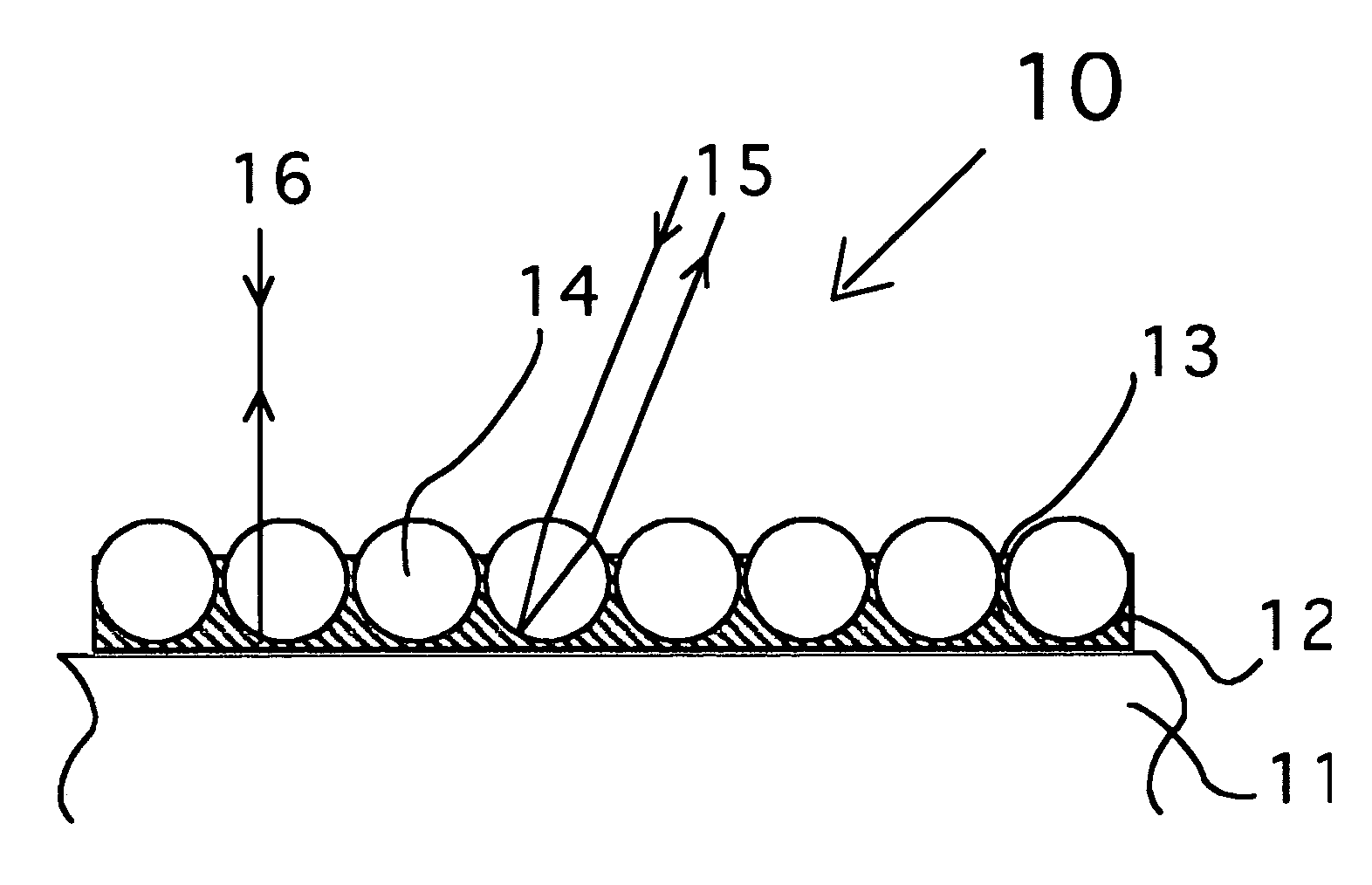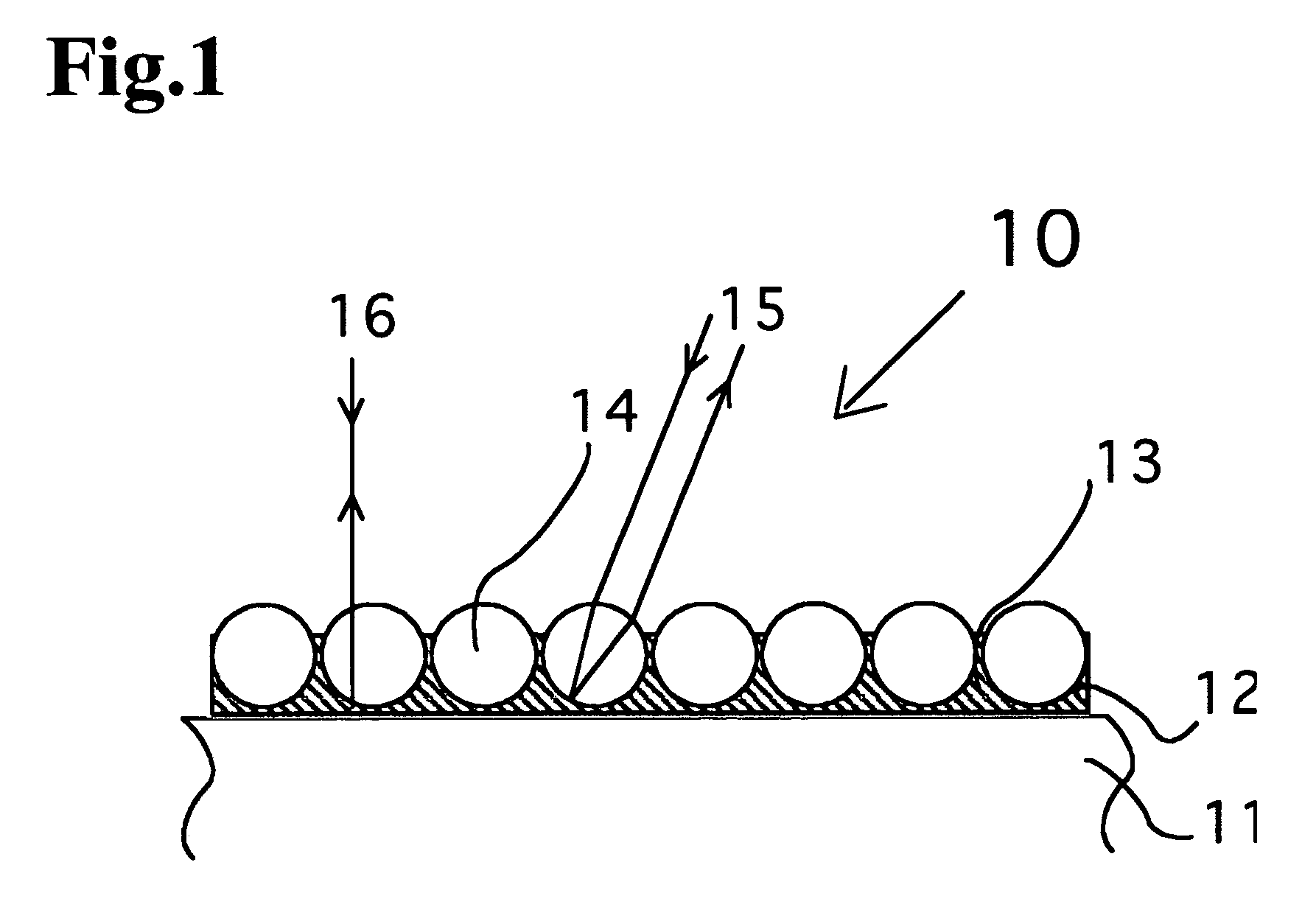Temporary cosmetic dental surface coating
a technology for cosmetic dentistry and teeth, applied in the field of teeth-related coatings, can solve the problems of insufficient stiffness, profound shrinkage, and unsuitable dental application of floss glasses, and achieve the effects of reducing the number of teeth, preventing tooth decay, and preventing tooth decay
- Summary
- Abstract
- Description
- Claims
- Application Information
AI Technical Summary
Benefits of technology
Problems solved by technology
Method used
Image
Examples
Embodiment Construction
[0042]Improving the cosmetic appearance of the teeth by application of a dental composition requires that the composition have appropriate viscosity to be easily paintable with a brush. The composition should also harden in a short period of time, producing a temporary cosmetic dental coating that is unaffected by saliva and is also non-toxic. These requirements are met by compositions that contain glass microspheres and a resin composition of the polymerized methyl methacrylate type or lac resin.
[0043]The lustrous appearance of the cosmetic composition coated teeth is primarily due to the retro reflective character of the cosmetic dental coating. The glass microspheres incorporated within the cosmetic dental coating redirects any incoming light back to the source due to internal total reflection, which occurs when light enters a glass microsphere. This phenomenon is extensively used in street markings and highways signs. A key requirement involves incorporation of the glass microsp...
PUM
| Property | Measurement | Unit |
|---|---|---|
| diameter | aaaaa | aaaaa |
| length | aaaaa | aaaaa |
| length | aaaaa | aaaaa |
Abstract
Description
Claims
Application Information
 Login to View More
Login to View More - R&D
- Intellectual Property
- Life Sciences
- Materials
- Tech Scout
- Unparalleled Data Quality
- Higher Quality Content
- 60% Fewer Hallucinations
Browse by: Latest US Patents, China's latest patents, Technical Efficacy Thesaurus, Application Domain, Technology Topic, Popular Technical Reports.
© 2025 PatSnap. All rights reserved.Legal|Privacy policy|Modern Slavery Act Transparency Statement|Sitemap|About US| Contact US: help@patsnap.com



